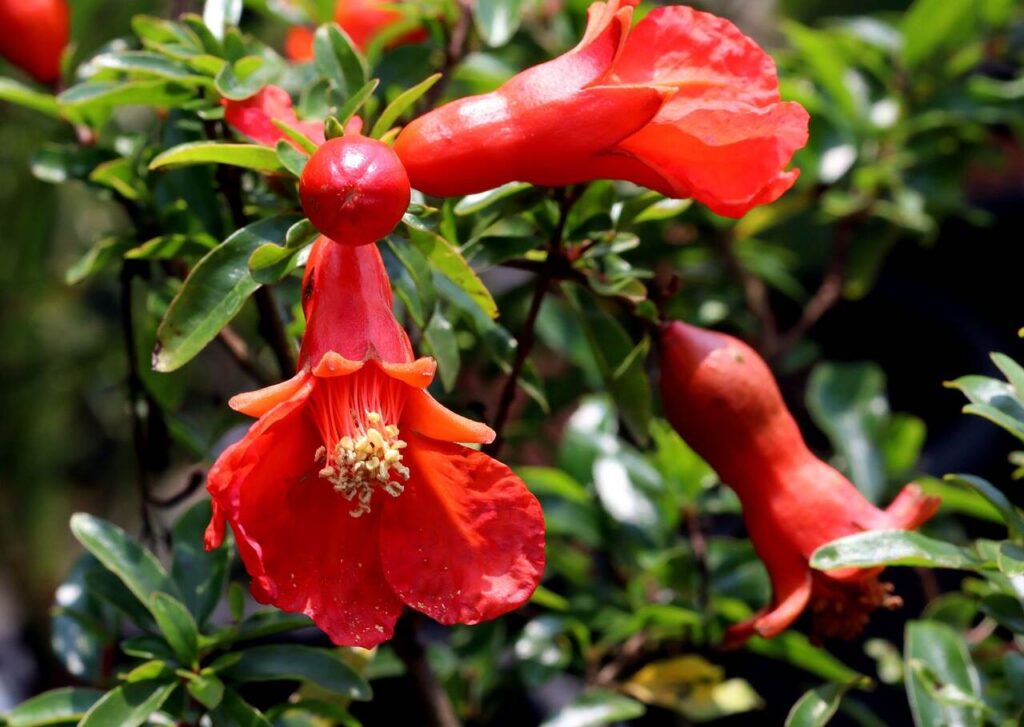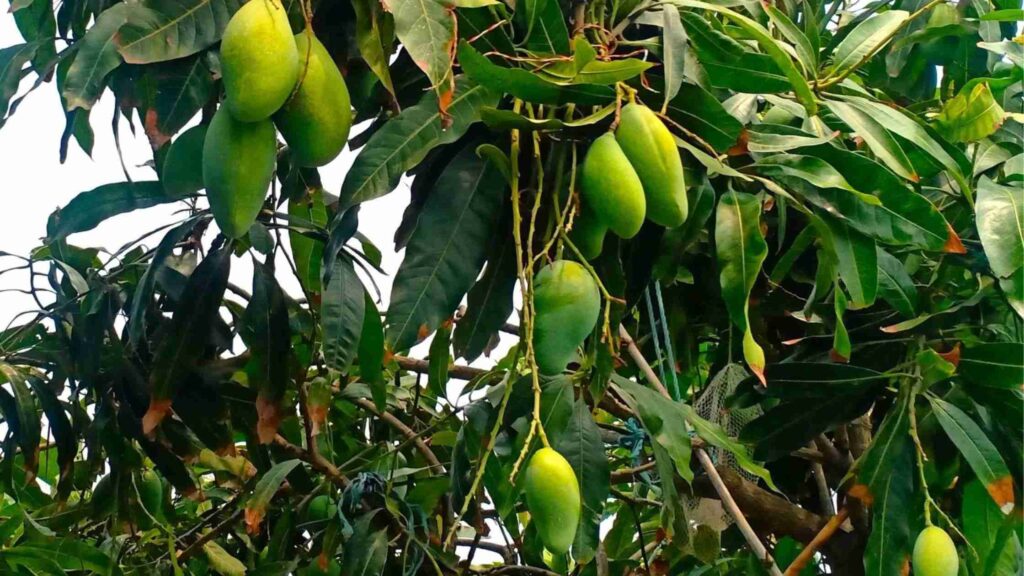I will demonstrate how to grow pomegranate tree in a pot and get a lot of fruits I will explain the method of growing a plant by seed of fresh fruit as well as from a grafted plant with 2 to 3 years update right from seed to harvest. I will explain why pomegranate flowers drop before maturity and what’s the solution to this problem. One of the easiest fruits to grow in a pot is the Pomegranate.
Planting Grafted Pomegranate Plant

You can grow pomegranate from seeds as well as from grafted plants. To grow from seeds, you need fully ripened pomegranate of good variety extract seeds. I have grown a pomegranate tree from a grafted pomegranate plant bought from a big nursery in my city.
Transplanting the Grafted Plant in a Big Container
I transplanted the grafted plant into the container measuring at least 12-16 inches wide and 18-20 inches deep. By cutting its top, I have also made some drainage holes in it. When the plant grew bigger it was easy to take it out while repotting pomegranate plant needs well-drained porous and nutrition-rich soil for growth.
Soil Selection
To make the best potting soil, I mixed 50% garden soil, 30% compost, and 20% cocopeat or river sand. I added 2 (two) handfuls of neem cake powder which acts as an organic fungicide.
After 1 year, the grafted plant has become 2 -3 feet tall. Now it’s time for flowering seasons and this time also I have plucked all the flowers. Pomegranates provide flowers 2 to 3 times a year.
It has been 20 months and once again it has started flowering. That time I did not remove all the flowers. Though weak flowers grew on very thin branches, this will automatically drop. But big flowers on the thick branches have a high chance of being converted into fruit.
Pomegranate plants grown in pots grow with limited resources and less soil. That’s why I tried one more method for the success of flowers. When one or two more flowers were growing in the same place, I left only one healthiest flower and carefully removed all other flowers. This will ensure the success of that one flower and also the fruit will be bigger.
Fertilizing and Watering the Pomegranate Plant

To meet the nutritional requirements of the pomegranate plant as soon as flowering starts, I mixed well-rotted cow dung or composted mustard cake powder and vermicompost in equal ratios. I applied this mixture to the container and did some light tilling. Pomegranates are not heavy feeders and require minimal fertilizer, so I fertilized once a month with a handful of organic compost per square foot. Pomegranate trees need less water, especially during the flowering phase. Over-watering can cause flower drops, then I watered only when the soil felt dry to the touch.
At 22 months, after the flowering season, some flowers started to turn into small fruits. It took around 6 to 8 months for the baby fruits to mature fully. By 2.5 years, the grafted pomegranate plant has produced fully matured fruits that were ready for harvesting. The first fruit was formed 100% organic pomegranate plant was weighed around 300 to 400 grams.
Repotting the Pomegranate Plant
For the proper growth of a pomegranate plant, it is important to repot it into a larger container with rich soil every 2 to 3 years. The best time for repotting is during the rainy season. When the fruiting period was over, I was taking the plant out of its plastic container and repotting it into a bigger container.
I stopped watering the plant 2 to 3 days before repotting to allow the soil to shrink slightly, making it easier to remove the plant without damaging the root ball. For better drainage, I created a 1-inch layer of stones at the bottom of the new container. I filled it with a potting mix and placed the plant in the center. I watered the plant thoroughly in its new container. This will boost its growth, and hopefully, I will get the best fruiting in the next season.
Some Important Tips

After 4–5 years, the majority of pomegranate trees that are produced from seeds start to provide fruit. Even though the plant may bloom during this time, nearly all of the blooms eventually fall off, and any fruit that does develop frequently includes unripe or whitish seeds. So, starting with grafted plants is preferable when growing pomegranate trees.
Particularly during the blossoming season, pomegranate plants demand less water. Water only when the soil is completely dry to the touch to avoid flower drops caused by overwatering. Mix equal amounts of vermicompost, composted mustard cake powder, and well-rotted cow manure to provide the plant with the nutrients it requires as soon as blossoming begins. Cover the container with this mixture and gently stir. Fertilizer is not necessary for pomegranates because they are light feeders.



